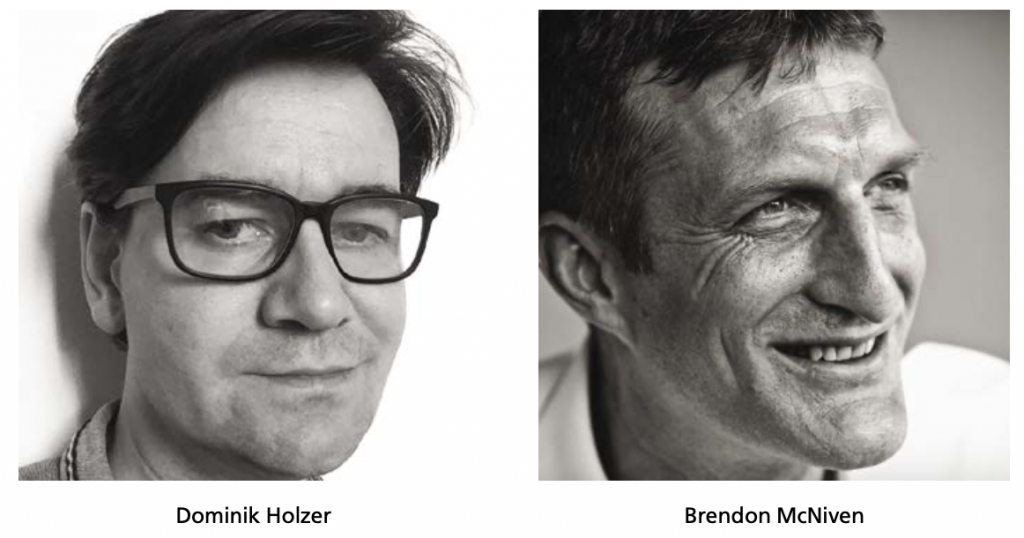
The following article appeared in the June/July issue of Ecolibrium, the journal of the Australian Institute of Refridgeration and Air Conditioning (AIRAH). It is the transcript of an interview between Ecolibrium and Dominik Holzer and myself (Brendon McNiven), from the Melbourne School of Design, University of Melbourne.
Ecolibrium: Are we finding out anything new about the relationship between architects and engineers?
Dominik Holzer: Our work is in many ways much more aligned than what it may appear in practice. Misconceptions or misalignment of views between architects and engineers often stem from a lack of time to communicate and interact, due to the way projects in practice are typically run. Information systems and collaboration tools allow us to become faster and faster in delivering projects, but at the same time don’t always benefit our understanding of “integrated design”.
Brendon McNiven: Personally, I would say the work is more aligned but the
way we think is more different than
I had anticipated.
Eco: Do architects and engineers generally work differently do you think?
DH: Yes, we do, but that’s not necessarily a problem. Architects are trained to
take risks; engineers are trained to minimise them. That paves the way for some interesting tension. The question then emerges: How do we “dance that dance” when interacting on projects? Do we become confrontational, work sequentially, or do we try and work more concurrent and iteratively?
Eco: Your research has been about the nexus between architecture and engineering. Does that
imply that you see architecture as more science than art?
DH: Architecture is what you make
it. There is no one way to it, as every project has its own challenges and opportunities, and every architect will understand and grab them differently. In other words, I’m not a big fan of any attempt to put architecture into any specific category. The nexus between architects and engineers has many facets, from being a dependency, mutually beneficial, inspirational, practical, educational, and so forth.
Eco: Where are the tensions do you think?
DH: By nature, engineers think more analytically whereas architects need to be able to rely on their gut instinct and their ability to draw on many references to propose an innovative design solution. That doesn’t mean that engineers aren’t able to do that as well. In practice, tensions often arise where architects seem to change their mind frequently as design remains in flux; yet engineers find themselves pushed in a corner if they have to respond to these changes quickly – and frequently – while their fees don’t allow them to constantly update their calculations. Technology can help this to a degree, but process innovation and change is required on both ends.
Eco: Are there still instance of projects where architects design a building and expect engineers to make it work?
DH: We refer to this as “sympathetic engineering”. I’d say it happens in 90 per cent of cases unfortunately.
It would be wrong to demonise this though. It is a symptom of industry practices that have persisted for decades.
BMcN: When architects do this, they put themselves at the mercy of the engineer. If they are lucky, they get “empathetic engineering” – not the best solution, but one that tries to empathise with the architect and what they are trying to achieve. If they are not lucky, they get a brute, “do whatever it takes” approach regardless of the architectural intent. Solutions are often driven by minimum fee spend (and the time thinking) required. The answer to many of the architect’s wants is, “Computer says no!”
Eco: Are projects still hierarchical – and is this a problem for accelerating integrated practice?
DH: Of course, they are. It comes down to contracts, fees and legal constraints. In my opinion, one can undertake integrated design between architects and engineers under pretty much any contract type, but collaborative contracting makes it so much easier. The key to the problem is knowing what to look for and selecting the right project team from the client side.
BMcN: Agree. Our mates in infrastructure seem to do this better than we do in buildings. Collaborative (alliance type) contracting is far more common, perhaps because they are more engineering driven, so the cost of not doing it this way can be very high – also they are much bigger, usually involve many disciplines, and often have large government clients who are well versed in multi-discipline design management involved (i.e., educated clients).
Eco: Do architects look down their nose at engineers, or
is that an old stereotype?
DH: Anyone looking down anyone’s nose must be an idiot. A lack of confidence on either side can lead to misconceptions and an “us vs them” mentality. It’s a mindset that we must change.
Eco: Why are we still seeing what appear to be unrated tall buildings cropping up in areas such as Box Hillin Melbourne’s east?
DH: That, you might need to ask to those commissioning and approving those buildings. In general, I see councils become more aware of sustainability issues, and weaving them into their tender requirements has become second nature.
BMcN: I put this down to procurement models and project-management practices that value blind reduction in risk and fees. This approach discourages time spent thinking about how to do things better, and encourages resorting to what has been done before. When faced with developing large complex projects in an adversarial environment, the majority of developers and contractors prefer to do what they have done before, knowing it will deliver a small but safe margin, even though they know it is not the best design.
Eco: We have been speaking about integrated practice for a long time. Is it happening?
DH: As practices are changing constantly, so is integrated design and its implementation. It has been around for many decades or even longer, and it often depends on the mentality of those involved on projects and the opportunities they are either given,
or they are able to create themselves.
BMcN: I believe we are currently seeing a groundswell in integrated design – driven largely by the recognition of its effectiveness in sustainability. The growing number of architectural engineering courses on offer in Australia is
a sign of this. We are behind Europe and perhaps (but less so) the United States in this respect.

Feel free to contact Dominik or Brendon with comments or further discussion (Dominik.holzer@unimelb.edu.au, brendon.mcniven@unimelb.edu.au).
Very Good!不错呀!